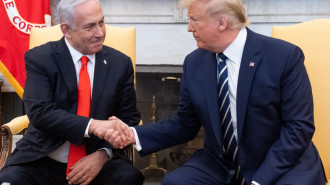Breadcrumb
As horrors of Assad's rule come to light, Syrians hope for better future
The road to Damascus from the Lebanese border at Masnaa was littered with army fatigues, taken off in a hurry by the Syrian soldiers of an army that by 5am on Sunday morning had melted away.
“No more borders,” said Abu Hamad Riyad, the driver, waving at the deserted checkpoints and customs areas, at the abandoned and burnt-out military vehicles.
Posters of Bashar al-Assad and his father Hafez, once imposing, had been torn to ribbons by a people who for the past 54 years had lived under one of the world’s most brutal dictatorships.
“What comes next will be better, it has to be,” Abu Hamad said.
A coalition of armed rebel groups – many here, including the rebels, use the word “revolutionaries” – driven by Hayat Tahrir al-Sham (HTS) and their commander Abu Mohammed al-Jolani, began a lightning advance from northwestern Syria that took everyone by surprise.
First Aleppo fell, then Hama, then Homs. After just 11 days rebel groups were encircling the capital Damascus, and when news broke on Sunday morning that Assad had fled the country on a private jet, it was all over.
The chaos of the first 24 hours, marred by looting and the uncertainty of what might come next, kept many people indoors.
But by Monday morning the security situation seemed under firmer control, with rebel fighters, shaggy haired and bearded, posted on every road intersection and public square – a few were even seen directing traffic.
The streets flooded with people, eager to bear witness to that first sunlit morning free of the regime. The atmosphere was euphoric, and the air thick with the smell of cordite.
The sprawling Umayyad Square was carpeted in bullet casings from celebratory fire that crackled across the city continuously, the racket matched only by the hundreds of cars beeping their horns in unison.
Parents helped their children climb onto an abandoned Syrian army tank to pose as they made the V-sign. The old national flag was burnt, and the new one, green, white and red with three red stars, held aloft. Everywhere there were smiles.
“We were all waiting for this moment, you can see how happy we are. We’ve come out into the city centre to show everyone how we feel, the freedom that we feel,” said Basel Sweidi, a 22-year-old student from the capital.
Basel, like many of his fellow Damascenes, hope for and expect a better future.
“We want freedom of expression, freedom of opinion; we want to be able to express ourselves without restrictions, these are our most important demands,” he said.
But the fall of the Assad regime was met with extreme contrasts of emotion in Damascus.
Assad's prisons opened
As the state’s prisons were opened by rebels, the horrors, some of which had been rumours until now, finally came to light. According to the Syrian Network for Human Rights, 136,614 people were being held in Syria’s expansive prison network.
Tens of thousands were released from Damascus’ infamous Saydnaya prison, many bearing the marks that gave the prison its common name of the “human slaughterhouse”.
Whether for political reasons or for no reason at all, people taken behind its walls and into its dank cellars simply disappeared, sometimes for decades, often forever. “Those who go in are buried; those who come out are born again,” they say here of Saydnaya .
Many never came out – 50 to 100 people were executed there every day according to Syria’s Civil Defence organisation the White Helmets.
Across the capital there were thousands of families searching desperately for their relatives. Many gathered at the busy transport hub of Abbassiyyin Square, bringing with them old photographs, videos on social media – sometimes just an age, a name and the year their relative went into Saydnaya .
Basma Saoud was looking for her brother, Salem Saoud. She has not heard a word of his existence since he was detained in 2011. Seeing her talk, more people quickly approached.
Samer Mohammed, from Deraa where the uprising began 13 years ago, was after his cousin, Mohammed Salah, four years in Saydnaya . Samer showed a video of a ghostly, emaciated prisoner. His cousin had appeared in a video shared online.
A few released prisoners were recovering – if recovery is ever possible for them – in the Ibn al-Nafees hospital in the northern suburbs of Damascus. One of its staff, Dr Hammam, said that every prisoner that had arrived there bore signs of torture.
Khaled al-Badaoui is from Aleppo and was taken to Saydnaya one day without warning two-and-a-half years ago. He was barely able to talk, his face disfigured from beatings. Despite this, he tried to answer those who flocked his hospital bed, desperate to know if he had seen their relatives on the inside.
Around mid-afternoon, explosions thundered in the distance after Israeli jets were seen carving white lines in the sky. Israel later confirmed it had targeted “strategic weapons systems” near Damascus and other parts of Syria.
Many here are anxious that this new chapter in Syria’s history will begin with more violence and instability, brought about by foreign intervention, internecine conflict, or both.
Jolani’s pluralist rhetoric has sought to dispel at least some of these fears, and among the HTS rank and file this narrative seems to have trickled down.
Stood outside the Ibn al-Nafees hospital, an HTS fighter slung his AK-47 to talk to the crowd outside.
“Do not think that tyranny will continue. There is something called rights, and above that there is god … All we want is for the oppressed to be free.”
After five decades of dictatorship and 13 years of civil war, the hope in Syria is for that rebel’s words to hold true.
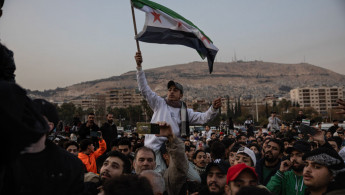
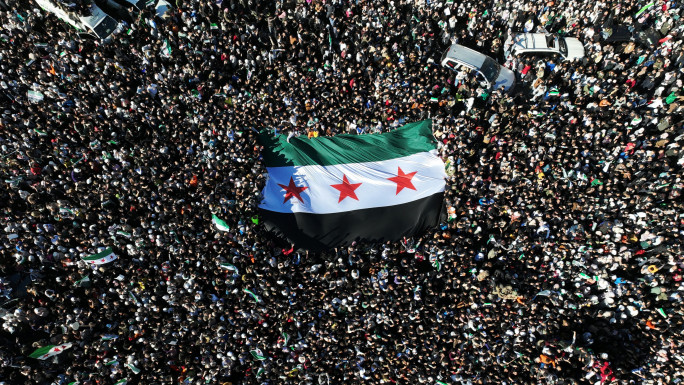
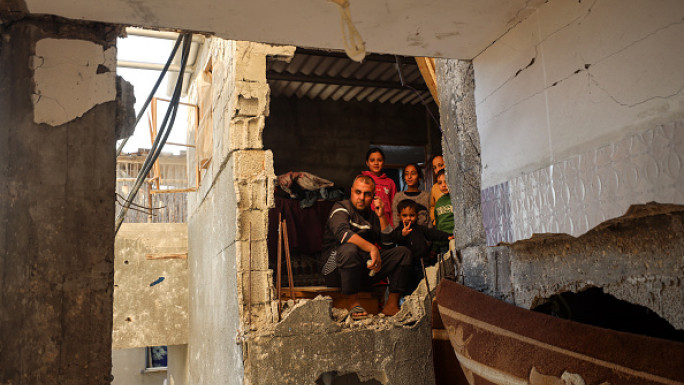
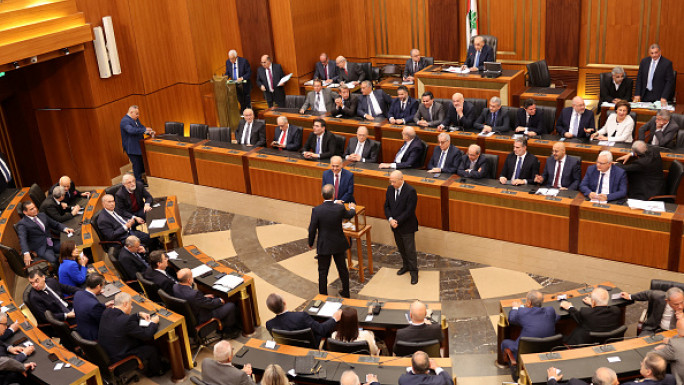
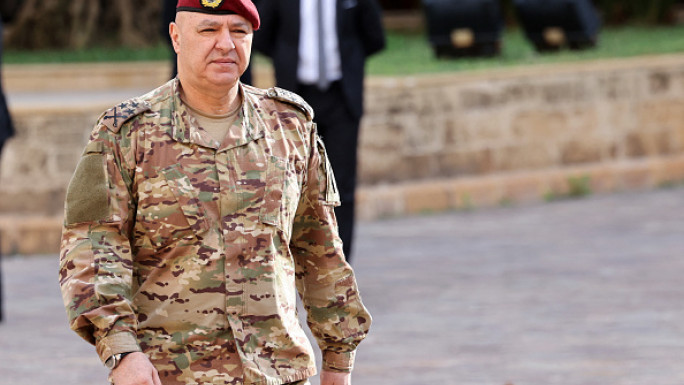
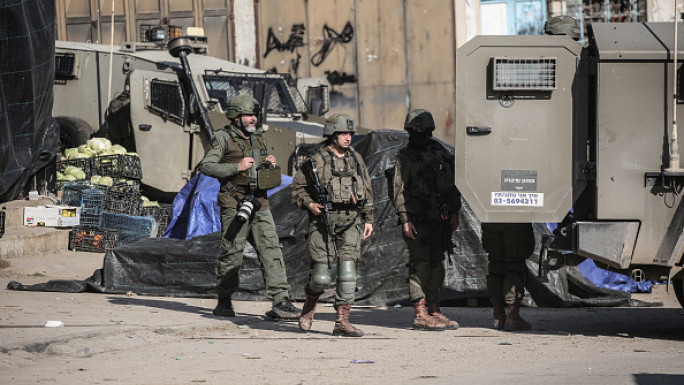
![Anthony Blinken speech [Getty] Anthony Blinken speech [Getty]](/sites/default/files/styles/image_684x385/public/media/images/6263436E-8ACD-4D3C-9055-25A7BE79DD5A.jpg?h=d1cb525d&itok=fLHmHCRG)
 Follow the Middle East's top stories in English at The New Arab on Google News
Follow the Middle East's top stories in English at The New Arab on Google News
![Paula Yacoubian was verbally attacked by Salim Aoun during a parliamentary session [Getty]](/sites/default/files/styles/image_330x185/public/1150162486.jpeg?h=b9615360&itok=xysBxMUJ)
![A UK watchdog claimed they received complaints about ads featured on the London Underground by UK company Wahed [Getty]](/sites/default/files/styles/image_330x185/public/2191229908.jpeg?h=38d368d7&itok=MjV-Rlf1)
